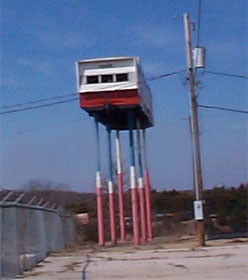Schwarz
View current page
...more recent posts
the end of 1960's architecture
tompkins square park EV
The SÉance In Experimental Writing
A two-day public meditation on the condition of language and narrative in contemporary writing.
The Séance in Experimental Writing gathers new and established writers to speculate on the boundaries of structural and linguistic experiments today. Participants include novelists, short-story writers, poets and hypertextualists from Canada, the U.S., and Europe, including Dodie Bellamy, Charles Bernstein, Jaap Blonk, Christian Bök, Dennis Cooper, Madeline Gins, Robert Glück, Kenneth Goldsmith, Shelley Jackson, Kevin Killian, Ben Marcus, Eileen Myles, Joan Retallack, Cristina Rivera Garza, Steven Shaviro, Janet Sternburg, and Lidia Yuknavitch.
beta-blockers
RIP Greg Shaw
LOS ANGELES -- Independent record producer Greg Shaw, who helped pioneer the "garage rock" sound by recording such edgy bands as the Stooges, the Germs, Sky Saxon and the Flamin' Groovies, died Tuesday of heart failure, his record label announced. He was 55.
Shaw founded Bomp! Records in 1974 to release a single by the Flamin' Groovies and later managed the group,
Shaw, who spent his career championing the works of artists considered too unruly for mainstream labels, represented groups whose musical styles ranged from rockabilly to surf to psychedelia to power pop.
The San Francisco native's interest in music was piqued when he began collecting records in the 1950s, eventually accumulating more than 1 million.
After moving to Los Angeles, Shaw wrote for several rock music publications and worked for a time for United Artists Records.
tobacco auctioneer's song
livestock auctioneer world champions
prepare for (more) massive change
americas best and worst cities for sleeping
Making solar materials better looking is the key to millions of American actually installing them on their rooftops, according to one executive. Those roofs are a "Persian Gulf of energy potential."
finally, an architect shows some restraint
royal q series
re4a
rocio romero
the nyc housing market
polaroid
trailer dog
Why Gehry and Snohetta
Landed WTC Projects
Suddenly, before me, new objects appeared, bizarre figures cut out, notched, a set of articulations has become suddenly visible and these observed objects were no longer banal, whatever, insignificant; they were on the contrary, diversified in the extreme. They were everywhere, all space, all the world was filled with new forms. They were nested in the hollows of the least forms. It was like an unknown vegetation that grew around me. Industrial objects without value provoked the appearance of objects temporarily given a great complexity. The position of things triggered new exotic forms, forms that escaped us despite their evidence. Accustomed as we are to trivial geometries, we perceive perfectly the circle, the sphere, the cube or the square, we perceive infinitely less well intervals, the interstices between things, between people.[31]
The above passage highlights another of the central aspects of Virilio's perceptual schema. The geometry that intrigues him is not that of the completed forms, as he notes, but rather of the 'intervals, the interstices' that spawned a plethora of new forms. It is the relationship of objects, and especially objects in movement that, as we have seen with the references to Epicurus, are the fundamentals of this physics or physical geometry. By seeing the articulations of objects each object becomes unique forcing the 'viewer' to see and not just re-see. By seeing the intervals or the spaces we create the commonplace where the objects may appear. That is, the 'intervals' are the duration that 'creates' time for dwelling.
from Paul Virilio: The Politics of 'Real Time' - David Cook
return of the blob-sofa
Bill Schwarz My First 1000 Wrenches Abaton Garage Jersey City
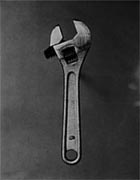
frank stella the space junk years
kraus campo
"...a new installation on the roof of the Posner Center dubbed “both a garden-as-sculpture and a sculpture-as-garden,” is a devastating failure. Inaugurated this past Friday, it is surprising that a sculpture as short-sighted as the Campo has been in planning by acclaimed artist Mel Bochner and architect Michael Van Valkenburgh since 2002."
Within 15 years, homebuilders may be living in prefabricated houses made almost entirely from steel, timber, clay, glass, concrete or even cardboard.
wazup doc ?
"I felt social changes would result from the Anthology," Smith explained to Cohen. "I'd been reading Plato's Republic. He's jabbering on about music, how you have to be careful about changing the music because it might upset or destroy the government. Everybody gets out of step. You...may undermine the Empire State Building without knowing it."
Walker Evans
"Untitled" (thinly painted arrow pointing left), ca. 1973/74
Color polaroid photograph, 4 1/4 x 3 1/2 in.
"Elements of the design and construction of the towers, investigators said, certainly played a part in how long the buildings stood. Buildings designed differently - with more robustly protected and spread-out emergency stairwells, for example - engineers said yesterday, might still have resulted in fewer deaths.
But the most severe shortcomings identified at the World Trade Center in the institute's comprehensive review do not pertain to how the buildings were conceived or built. Instead, the failings on Sept. 11 were chiefly found in the response by the New York City Fire and Police Departments, which was hampered by inadequate command, unreliable communications equipment and an overwhelmed dispatching system.
For Leslie E. Robertson, the structural engineer who helped design the twin towers as a young man back in the early 1960's, the latest findings buttress his longstanding assertion that the towers were fundamentally sound. His wife, Saw-Teen See, who is a managing partner at Mr. Robertson's New York design firm, said the report "validates the way we thought the structure would have performed."
airstream knowledge sharing forums
jandek sorry, no hot linking
"Visiting Charles Sheeler's famed portraits of Henry Ford's Rouge complex at the Detroit Institute for Arts the other day, I was struck by how much architecture owes to photography."
your getting warmer warmer, warmer...
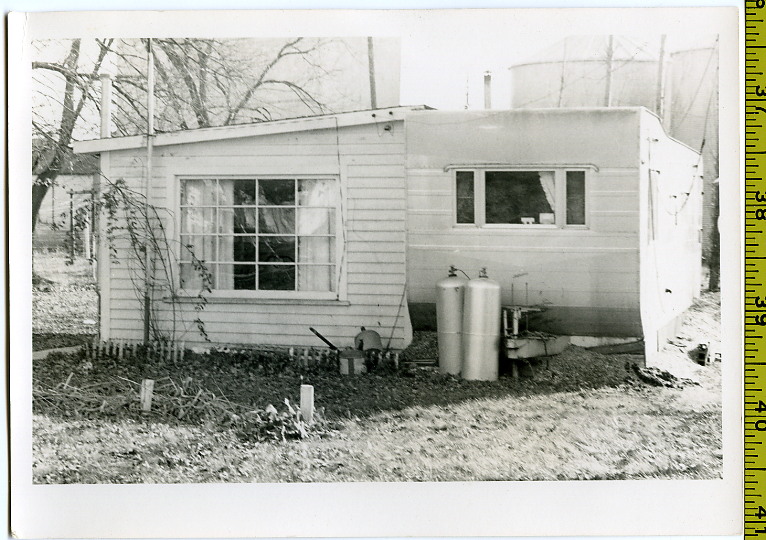
tomorrows house from yesterday
"The international space-age craze of the 1960s stirred interest among Finnish architects,
but there was only one Finnish project that can be regarded as a bona fide sample of space-age
architecture: the Futuro house designed by Matti Suuronen. Its design encapsulated the distinctive
themes of 1960s utopian architecture: mobility, increased leisure time and new materials.
This plastic, ellipsoid, portable holiday hideaway represented something totally new in Finnish
architecture. Even by international standards, it is among the most striking samples of utopian
space-age design."
flatpack
Music and Language in Working-Class Culture
LOS ANGELES (Oct. 15) - Burt Reynolds and Willie Nelson are in final negotiations to join Johnny Knoxville, Seann William Scott and Jessica Simpson in the big-screen version of "The Dukes of Hazzard."
Reynolds, most recently in theaters with the hit comedy "Without a Paddle," would play the evil Boss Hogg, a role played in the original 1979-1985 CBS show by the late Sorrell Booke.
Nelson would play Uncle Jesse, stepping in the shoes of the late Denver Pyle. Knoxville and Scott will play his good ol' boy nephews, Luke and Bo Duke, respectively, with Simpson on board as their sexy cousin, Daisy Duke.
Jay Chandrasekhar is directing the Warner Bros. project.
Reynolds' upcoming film include "The Longest Yard," "Cloud Nine" and "Instant Karma." Nelson, better known as a country music legend, has appeared in such films as "Wag the Dog" and "Red-Headed Stranger."
Reuters/Hollywood Reporter
gone to schwarz/segui family reunion in st augustine
"Mr. Kahn, 69, has been a steadfast chronicler of offbeat owner-built shelter: straw and mud houses, solar-powered houses, geodesic domes beloved by hippies (of whom Mr. Kahn was one) and made from chopped-up cars pounded into submission and bent into triangles."
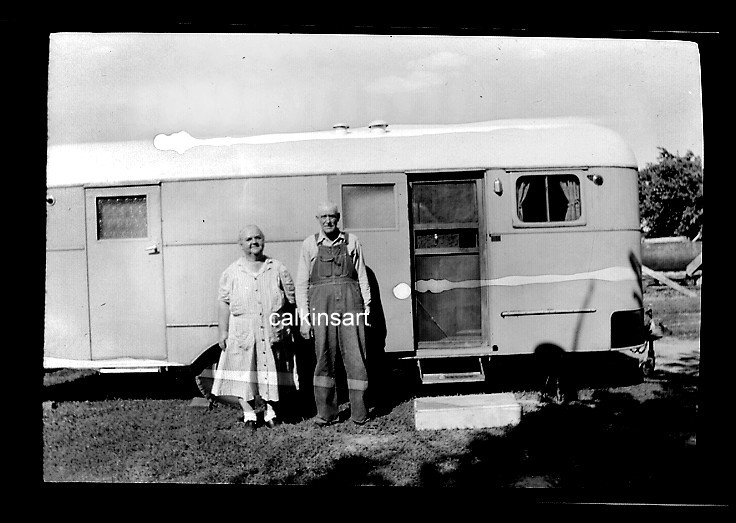
this is the reverse image of an imperfect celluloid negative with 4 hours to go and no bids yet. it looks like an american gothic redux to me. is that splotch too distracting ? i guess it colud be photo shopped out.
The Japanese architect Shigeru Ban and the New York-based architect Dean Maltz have designed the Nomadic Museum, a movable exhibition space with steel cargo containers for walls and columns made of recycled paper tubes. The traveling museum will be transported in its own containers and will arrive at Pier 54 in Manhattan early next year, with a show of 200 large black-and-white photographs by the Canadian-born artist Gregory Colbert called "Ashes and Snow'' (March 5 through June 6; information: ashesandsnow.org) >scarey flash warning!!!<. RAUL A. BARRENECHE for the NYT - see home section currents slide show.
via guest star selma
Nowottney Report
Hi friends of Marianne,
In celebration of her return to the performing stage this year AND
her upcoming 22nd birthday, we have put together a cdr/ep project of
one of her best and most unique performances.
This 19 minute, 3 song set was recorded at the Knitting Factory, NYC
when Marianne opened for Genesis P-Orridge on October 22, 1999. A
still green sixteen-year old, Marianne is performing with Steven
Parrino (Electrophilia) on bass guitar, Scott Jarvis, (Workdogs, John
Spencer Blues Explosion) on percussion and Mark Dagley (The Girls,
Pothole Skinny) on guitar and violin. This is a BLUESJAZZROCKNOISE
set. It seems Marianne had channeled both Sun Ra and Iron Butterfly
that evening. So clearly it's 100% RECOMMENDED by us folks at Abaton
Book Company. It is available now!
The release is only $5.00 and it includes shipping anywhere!
We have set up a paypal link below. Just scroll down to the last item
on that page and click on the paypal button:
http://www.abatonbookcompany.us/AbatonMusic.html
We'll have photographs available soon of last night's Tonic
performance.
We are also working on transferring Marianne's concert footage from
1998-2003 from DV onto DVD-R's. We'll keep you posted!
Regards,
abaton book company jersey city
"The story of the original Smile is a fascinating catastrophe. It's best detailed in Domenic Priore's book Look! Listen! Vibrate! Smile!, a collection of magazine articles, interviews, sheet music and other primary documents from the period when Smile originally almost came to fruition. The essence of it is that in mid-1966, Wilson was at the top of the American pop world. His group the Beach Boys (who were, at that point, under his creative control) had been making increasingly beautiful, complicated records, built around exquisite harmonies and Wilson's inventive way with tone color; the Beach Boys' album Pet Sounds had set them up as the band to beat, and they'd followed it with the song "Good Vibrations," which had raised expectations for Wilson's work even higher. (Contemporary readers may need to work a bit to imagine "Good Vibrations" as a revolutionary piece of music rather than as an orange soda commercial, but that's what it was.)"
the yiddish book center
woman with trailer
If the reigning monarch of Iraq hadn't been assassinated in July 1958, the Frank Lloyd Wright-designed Grady Gammage Memorial Auditorium wouldn't exist in its current form.
The auditorium is the site of tonight's presidential debate between President George W. Bush and Sen. John Kerry.
photos 1, 2
Lamp House
For over 100 years, Frank Lloyd Wright has cast his shadow across Madison. With the passage of time, the Wisconsin-grown architectural genius can finally be considered for the lasting aesthetic legacy he left the city, uncomplicated by the sometimes uneasy personal relations he had with a city he could have called home.
Buffalo knocks down their fukin' FLW Larkin Bldg
LMDC announces
"In the early '50s Britain remained in a state of economic austerity that made the consumerist world appear exotic to British Pop artists. For the Americans, on the other hand, the commercial landscape was almost second nature, to be treated with a show of cool. Common to both groups, however, was the sense that consumerism had changed not only the look of things but the nature of appearance as such, and all Pop found its principal subject there: in the heightened visuality of semblance, in the charged iconicity of people and products (of people as products and vice versa) that a mass media of corporate images had produced. (1) The consumerist superficiality of signs and seriality of objects also had to affect architecture and urbanism as well as painting and sculpture. Accordingly, in Theory and Design in the First Machine Age (1960), Banham imagined a "Pop architecture as a radical updating of modern design under the changed conditions of a "Second Machine Age" in which "imageability" became the primary criterion. (2) Twelve years later, in Learning from Las Vegas (1972), Venturi and Scott Brown advocated a Pop architecture that would return this imageability to the built environment from which it arose. However, for the Venturis this imageability was more commercial than technological, and it was advanced not to update modern design but to displace it; here, then, Pop began to be recouped in terms of the postmodern. (3) The classic age of Pop can thus be framed by these two moments: between the retooling of modern architecture urged by Banham on the one hand and the founding of postmodern architecture prepared by the Venturis on the other."
-- hal foster / oct '04 artforum
warped space
"Beginning with agoraphobia and claustrophobia in the late nineteenth century, followed by shell shock and panic fear after World War I, phobias and anxiety came to be seen as the mental condition of modern life. They became incorporated into the media and arts, in particular the spatial arts of architecture, urbanism, and film. This "spatial warping" is now being reshaped by digitalization and virtual reality."
world police
toh carlisle project
how you say, Loews ?
ericofon telephones collected repaired and sold
bob dylan chronicles vol. 1
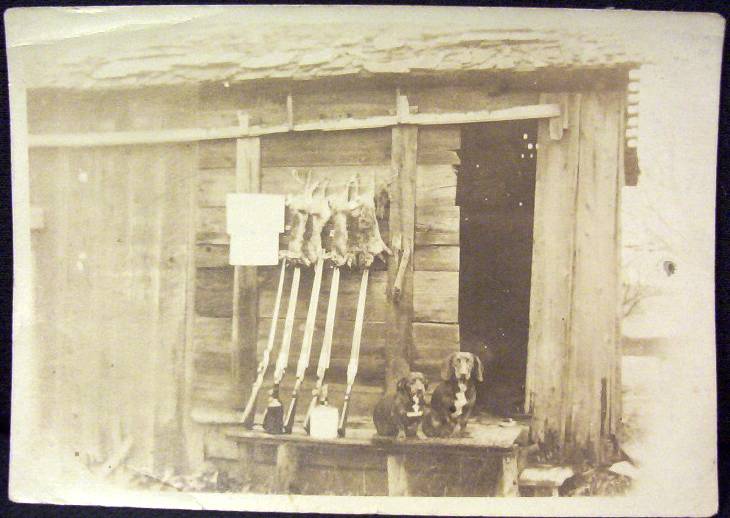
really crappy richard prince on warhol & himself piece in oct '04 artforum
paul rudolph and the sarasota school modernists
The Serpentine Gallery has commissioned the Dutch architectural practice MVRDV to design a spectacular Pavilion that will completely cover the entire height and width of the Serpentine Gallery on all four sides throughout the summer of 2005.
openhousenewyork
reusing big boxes
"Territories: Islands, Camps and Other States of Utopia is one of a series of publications from Kunst-Werke (KW) gallery in Berlin about the politics of space. It documents art works from an exhibition of the same title; it also compiles additional work by critics, architects, artists, and filmmakers. In the wake of documenta X and XI exhibitions of contemporary art in Kassel, Germany, books like these are evidence of recent collaborations that look for continued or enhanced political impact. More than installation art bounded by the gallery, these works are positioned on the front lines of global conflict. "
"Today “criticality” is under attack, seen by its critics as obsolete, as irrelevant, and/or as inhibiting design creativity. What is more, the criticisms that are increasingly frequently being made come from an interesting diversity of sources. To start to make sense of this emergent situation, we might try to locate the beginnings of the evident shift of opinion against this once-so-dominant theoretical discourse in architecture. One interesting precursor of current comment was an outburst by Rem Koolhaas at one of the series of conferences organized by ANY magazine, this one at the Canadian Centre for Architecture in 1994: “The problem with the prevailing discourse of architectural criticism,” complained Koolhaas, “is [the] inability to recognize there is in the deepest motivations of architecture something that cannot be critical.”(2) But if Koolhaas' complaint was a harbinger of things to come, probably the first frontal challenge to criticality was a text published by Michael Speaks, the Director of Graduate Studies at Southern California Institute of Architecture, in the American magazine Architectural Record in 2002.(3) In a startlingly revisionist text, Speaks explicitly abandoned the “resistance” that he had learned from his own teacher, Fredric Jameson, in favor of a model of a new, alternative, and efficaciously integrated architecture that would take its cues from contemporary business management practices.(4)"
HDM Fall 2004/Winter 2005, Number 21
Rising Ambitions, Expanding Terrain
Realism and Utopianism
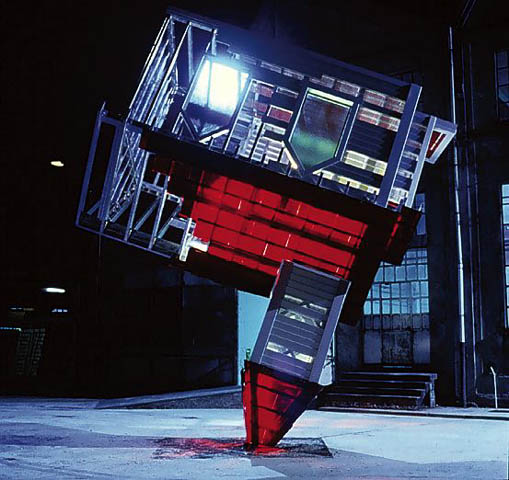
as per artnet : A sculpture by Dennis Oppenheim proposed for the Stanford University campus in California has proved itself too controversial for Stanford president John Hennessy, who cancelled the commission after complaints from the school’s dean for religious life. The 25-foot-tall sculpture, called Device to Root Out Evil, is a latticework church that has been turned upside-down and stuck into the ground by its steeple; a version of the work was presented at the 1997 Venice Biennale. A Stanford alumnus, Oppenheim says the cancelled commission has cost him "$100,000 easy." The work "really did root out evil in a strange, circuitous way," Oppenheim told the "Stanford Daily." The president and others have conservative views and are afraid of a work of art, and now we know about it."
moma rethinks design collection / less tiff more kev
inconvienent evidense: iraqi prison photographs from abu ghraib
this show consists of twenty amature digital cellphone, digital camera and digital video still images taken from the internet
Chief curator Brian Wallis and director Willis Hartshorn of the International Center of Photography discuss their current exhibit with Leonard Lopate.
The Skyscraper Museum
Frank Lloyd Wright: The Vertical Dimension
October 6, 2004 - January 9, 2005
The first comprehensive examination of the high-rise designs of America’s foremost architect, Frank Lloyd Wright: The Vertical Dimension, examines Wright’s abiding interest in the re-invention of the tall building. Over the course of his long career, Wright designed a dozen high-rise buildings of which only two were built--the Johnson Research Tower in Racine, Wisconsin (1944), and the Price Tower in Bartlesville, Oklahoma (1952-56). With these designs, Wright proposed a new structure for the skyscraper, challenged prevailing building practices with his use of materials, and proposed new directions in high-rise living.
special thanks to selma
soul on top
On this 1969 recording, Soul Brother #1 makes no secret of his love of jazz — and his own phenomenal gifts as an improviser. In collaboration with Louie Bellson, one of jazz’s most impressive drummers and one of its most expressive arrangers, Oliver Nelson, Brown tears through jazz standards and gives his own hits a new twist.
port authority terminates terminal five show
via selma
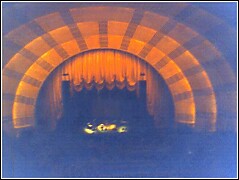
rcm upper mez 3rd row from the back waiting for wilco (vote for kerry) to come on via julies cell phone and sprint picture mail sm, one sprint, many solutions. and i forgot to thank mercedes-benz.
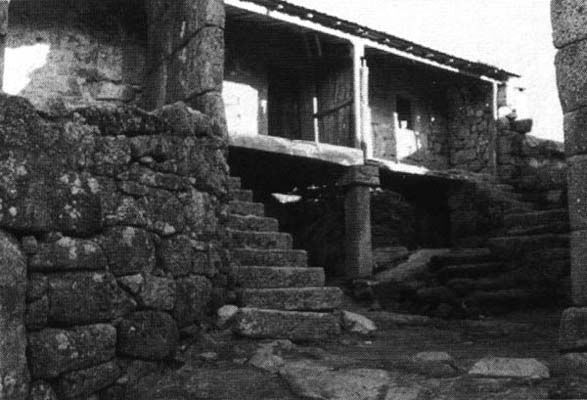
(figure 3) Vernacular farm building from Tras-os-Montes region of Portugal
"Paulo Varela Gomes, in his brief but excellent synopsis of Portuguese architecture, has called the thinking reflected in this book a "metaphysic of the relation between work and life. The vernacular is seen as the unmediated and, shall we say, prelinguistic product of life and its conditions. I would again bring to mind Rosenberg's idea of "American action painters" whose work did not represent the being of the artist so much as it was an unmediated trace, or record of the artist's life in action. These buildings are like tools, transparent to their human task (figure 3). They bear the logic that brought them into being: the task to be performed, the hand that will need to grip them, and indirectly that aspect of the society reflected by the very existence of the need to perform that task to which the tool is dedicated. The sign is not yet broken into the arbitrary relationship between the signifier and the signified. "
alvaro siza
ralph lauren one of a kind vintage airstreams Clerance Sale
McDonalds to Claim Ownership of Letter M
DRE: I spoke to Tom when the show was just starting and he mentioned there might be a couple of episodes of Viva Variety going on the first Reno 911 DVD set. What happened with that?
BG: We talked about it. We wanted to put Viva Variety on the air again like at 3 in the morning instead of one of those weird Bill Maher movies where he’s fighting jungle women. They don’t want to do it and we don’t know why. We love that show. We think we could edit together a best of Viva Variety video and it would really blow people away. We had such good bands on that show like Ween, Fishbone, The Mighty Mighty Bosstones, Shonen Knife and G Love and Special Sauce. We got drunk with Fishbone after the show. We had weird guest stars like Adam West and Charles Durning. We want them to put out DVDs of the show and we’re working on it but for some reason they are really dragging their feet. We don’t make any money when they sell it; they own it lock stock and barrel so I don’t know what’s holding them back. We just want people to see it.
ezra stoller architectural photography
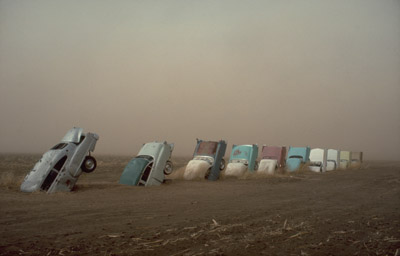
Cadillac Ranch: The Restoration, 1974/2002. Installation view, Amarillo, TX. Photo: Wyatt.
ant farm 1968 - 1978 ICAP
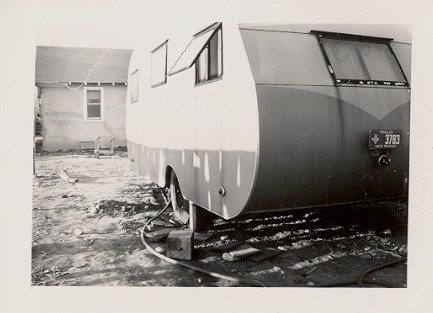
"Long before Santiago Calatrava unveiled his architectural allegory for flight that will become the downtown PATH station, Eero Saarinen gave New York City a symbol that captured the grace and excitement of the jet age by mimicking the shape of a soaring bird. Since its completion in 1962, the TWA Terminal at John F. Kennedy International Airport has served as an icon of both modern air travel and modern design. But its daring gull-winged construction—a reinforced concrete sculpture that tested the limits of its material and of what modernism could be—was the source of its distinction as well as downfall. The building’s stand-alone, sinewy form made it difficult to adapt it to the rapidly modernizing airline industry. Larger airplanes, increased passenger flow and automobile traffic, computerized ticketing, handicapped accessibility, and security screening are just a few of the challenges that Terminal 5 (as it’s officially known) could not meet without serious alteration. When the terminal closed in 2001 (in the wake of TWA’s demise in 1999), no other airline stepped up to take over the space."
fabprefab news letter no. 8
biennale of architecture venice 2004 // german pavilion
project 90 // 09.09.2004 // residential building with studio gleissenberg
"In Gleissenberg, a village in the Bavarian Forest with a population of 1000, a house with a transparent plastic envelope comes as a surprise in the new development area. The simpe shape of this low-cost project makes reference to traditional methods of housebuilding in the countryside but re-interprets these methods by using new materials. In spite of the tight budget, the Munich architect Florian Nagler designed a large, light-filled house with a studio for the clients in the form of a prefabricated wooden building, enclosed in high-quality polycarbonate grouser plates."

